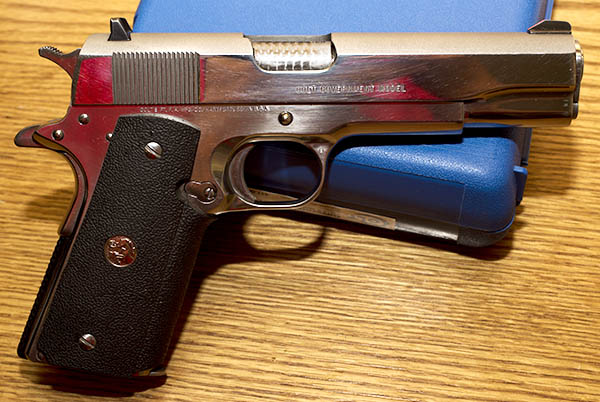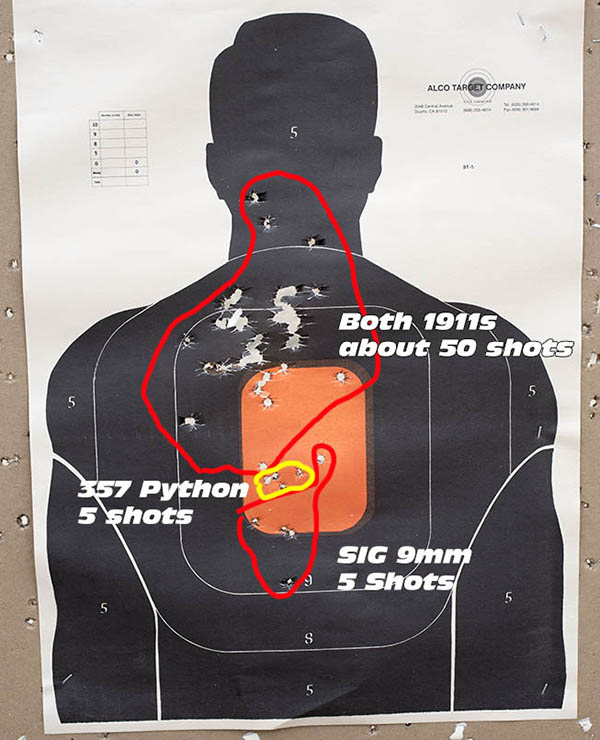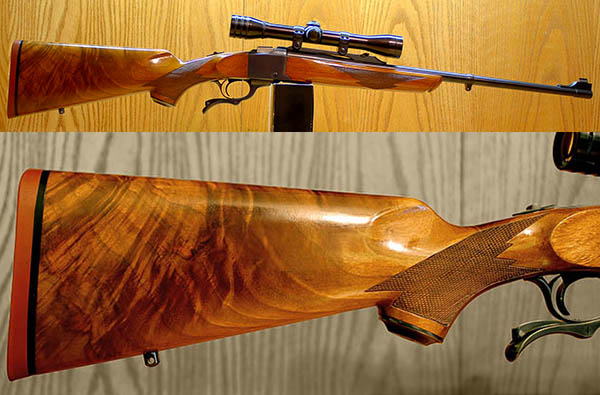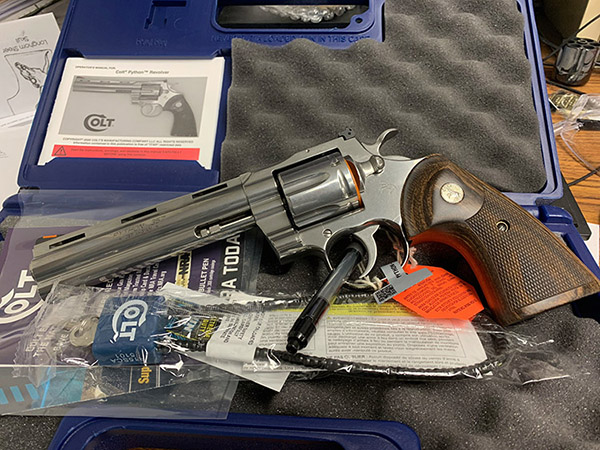By Joe Berk
A few days ago I blew up my 9mm Springfield Armory 1911. It was hellaciously frightening. I wrote a blog about it and I’ll provide a link at the end of this post. My initial conclusion was that I had committed the cardinal reloading sin: I double charged a case. Instead of the intended 5.4 grains of Accurate No. 5 propellant, I cycled the round twice at the charging station and I inadvertently loaded 10.8 grains. I know what you are thinking and that’s okay. If I read about somebody doing this, I’d think they were a dumbass, too. I’ll get back to that later.

Thinking about the double charge issue more, several additional thoughts emerged. Were there other possibilities?
One other possibility is that instead of the failure being due to a double charge, it might have been a squib charge (which would lodge a bullet in the bore) followed by another round. This was dismissed for several reasons:
-
-
- I knew it wasn’t preceded by a squib charge because the prior round felt normal.
- If it was a squib charge, the following round probably would not have chambered. Squib charges resulting from no powder and pressure being provided by the primer only (in a handgun) tend to push the bullet into the barrel a very short distance (the bullet doesn’t go into the barrel far enough to allow another round to chamber).
- The were 5 holes on the target, which is the number of rounds I had fired.
- The barrel was not bulged (TJ inspected it and pronounced it good).
-
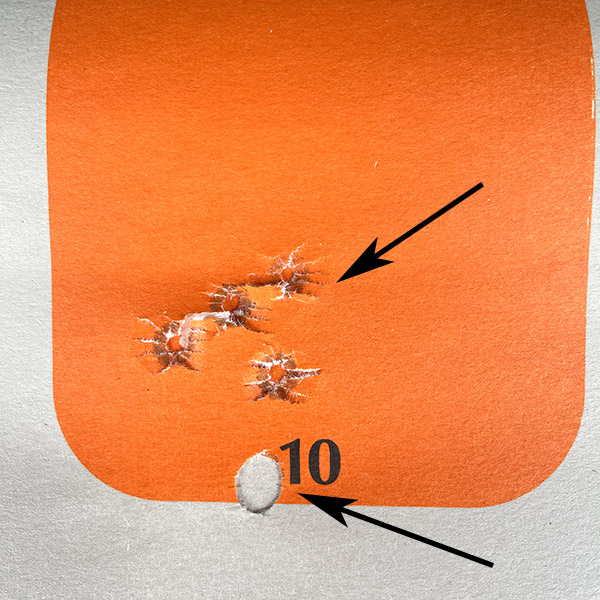
A friend asked if I could have seated two bullets in the case. I set bullets (one on top of the other) next to a cartridge case. I think you can see that seating two bullet in the case is not possible. The bottom bullet would set higher in the case than you see in the photo below (the web near the case base and the thickness of the case “floor” would cause it to seat much higher in the case). I would not have been able to seat the second bullet even if there was no powder in the case.

I pulled the bullets in the photo above from two cartridges using an inertia bullet puller. Both had exactly 5.4 grains of Accurate No. 5 propellant, which is what I intended. These are the pulled bullets on top of their cartridge cases:

After I pulled the bullets and put the powder back in each case, you can see the level at which the right amount of propellent (5.4 grains) sets in the case.
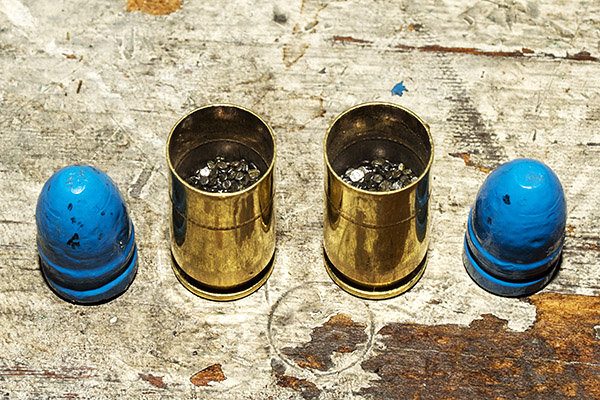
I wondered: Would a double charge (i.e., 10.8 grains of Accurate No. 5) fit in a cartridge case without it spilling out of the case? The answer is yes. I took the powder from one case and poured it in the other. The case can easily hold 10.8 grains of Accurate No. 5. Take a look:

It would be better if the powder was bulky enough that it would spill over the case rim if I double charged it. I know that my 9mm Unique load sits higher in the case (my Unique load for the 125-grain bullet is 5.0 grains).

Here’s what 5.0 grains of Unique looks like in a 9mm case:
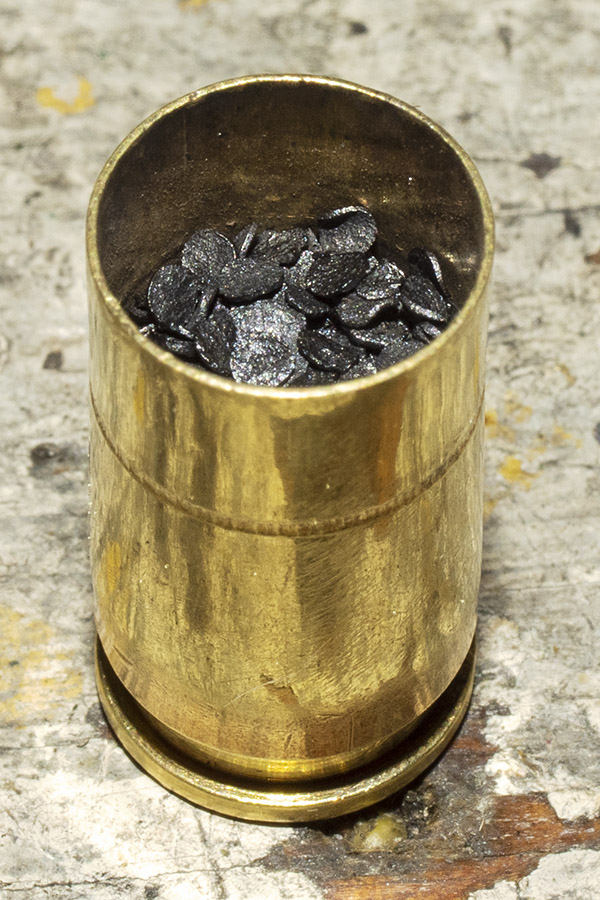
The question then was how much Unique can a cartridge case hold? I was specifically interested in determining if a double charge of Unique would overflow the case. To answer this, I completely filled a 9mm case with Unique and weighed that amount of propellant:
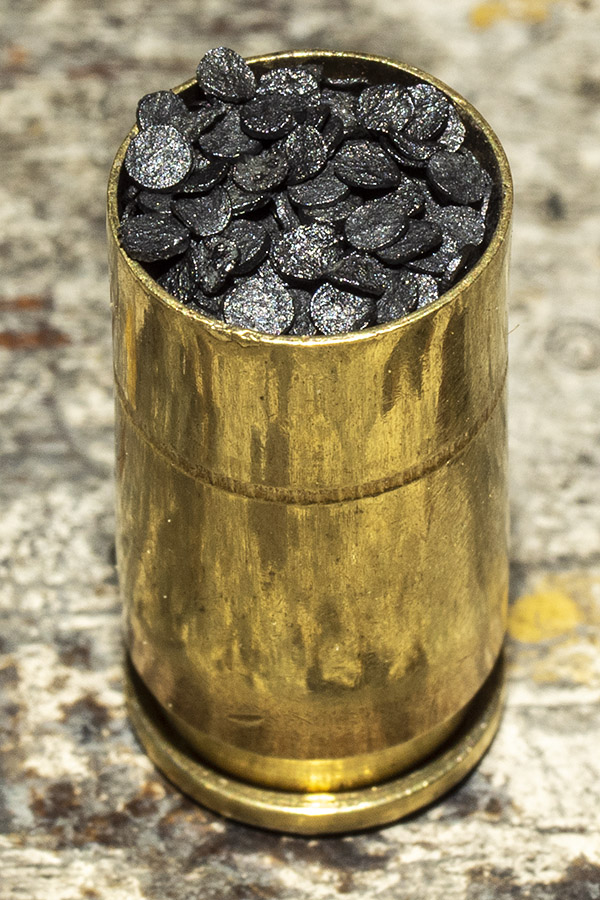
I weighed the amount of Unique held by a completely-filled 9mm cartridge case. The filled 9mm case held 7.9 grains of Unique.
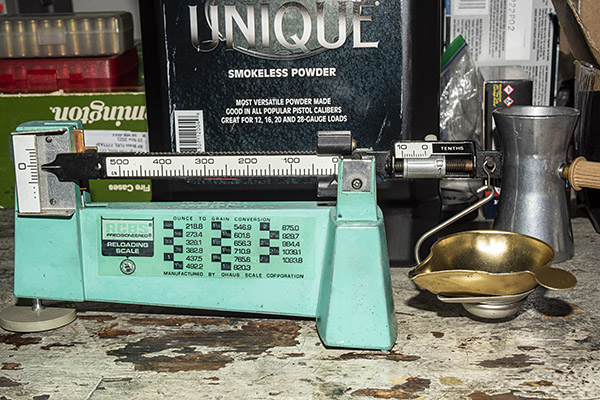
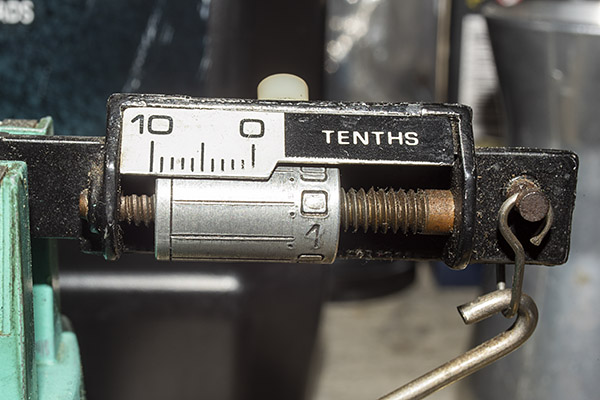
A double charge of Unique would be 10.0 grains. I concluded that a double charge of Unique would overflow the 9mm case, and this would provide an additional safeguard against an inadvertent double charge. I was careless enough to not notice a case double-charged with Accurate No. 5. I’d like to think I wouldn’t be careless enough to miss powder spilling out of the case, as would occur with Unique. The next time I load 9mm ammo, it will be with Unique.
You might be wondering about the numbers here. Bear in mind that Unique is a less dense propellant than Accurate No. 5. 10.0 grains of Unique occupies more volume than does 10.8 grains of Accurate No. 5.
The challenge now is what to do about the approximately 1400 rounds of 9mm and .45 ACP I already have loaded on the Lee Turret press. I thought I might be able to quickly screen the rounds by weight, but that’s not going to work. The weights of the powder, the brass case, and the bullet all vary, with the bullet (as the heaviest item) having the greatest variation. On the 9mm cartridges, I found that the weight variation of the completed 9mm cartridges varies from 192 grains up to 198 grains. The powder charge is 5.4 grains. If a cartridge weighs 198 grains, would it just be at the upper edge of the weight distribution with the correct single charge, or would it be a 192-grain cartridge with a double charge? It’s even worse on the .45 ACP rounds, because the weight variability of the completed cartridge is more than the 9mm, and those powder charges are in the range of 5.0 grains or 5.4 grains (they are lost in the case compared to 9mm ammo). I can’t take the chance that there’s another double charge in there. I’m breaking down and checking every cartridge. It’s a lot of work, but it’s better than blowing up a gun.
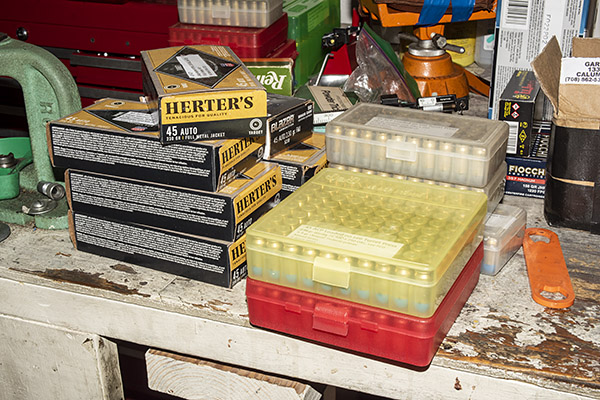
You might be wondering what it’s like to get back on the range after blowing up a gun. I was afraid I might return with a very serious flinch (you know, when you jerk the gun in anticipation of it firing). I’m happy to report (and maybe brag a little bit) that I’m just fine. I had my 9mm S&W Shield out with ammo that I tore down, checked, and reloaded, and I also had my Colt Python (in which I shot .38 Special wadcutters).
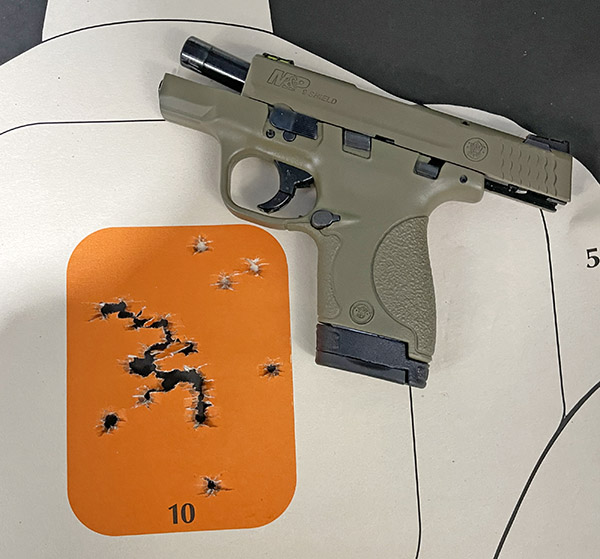
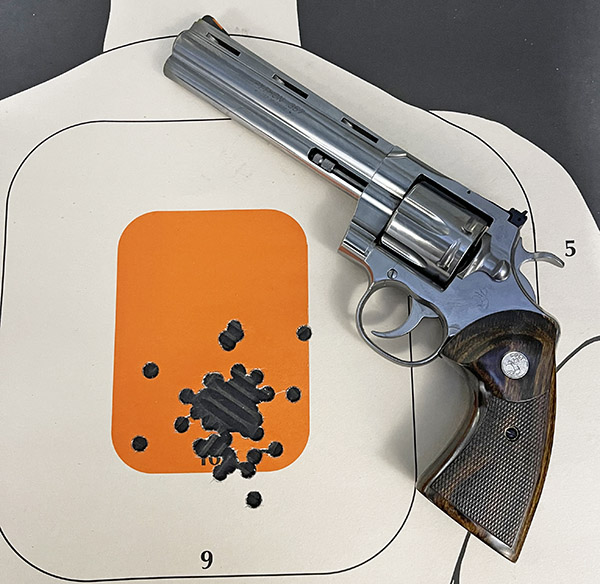
At this point, I’m convinced that I screwed up and double-charged the 9mm round I wrote about last week. TJ (of TJ’s Custom Gunworks) disassembled the gun and pulled out the case you see in the photo at the top of this blog. There was a lot of pressure in there (about 10.8 grains of Accurate No. 5’s worth, actually). Like I said in the earlier blog, it’s an opportunity. More good news is the barrel wasn’t damaged. Even more good news is that TJ is doing an action and reliability job on my 1911. TJ is replacing the two piece guide rod (two-piece guide rods are a solution to a problem that doesn’t exist) and doing a few more good things to this pistol. I’ve already purchased and received replacement grips and a new 9mm magazine. I’ll provide an update in a couple of weeks after I get the 1911 back, and I’ll do another blog on what it’s like disassembling and reassembling 1400 rounds of reloaded ammo.
Stay tuned!
Please click on the popup ads!
Never miss an ExNotes blog:

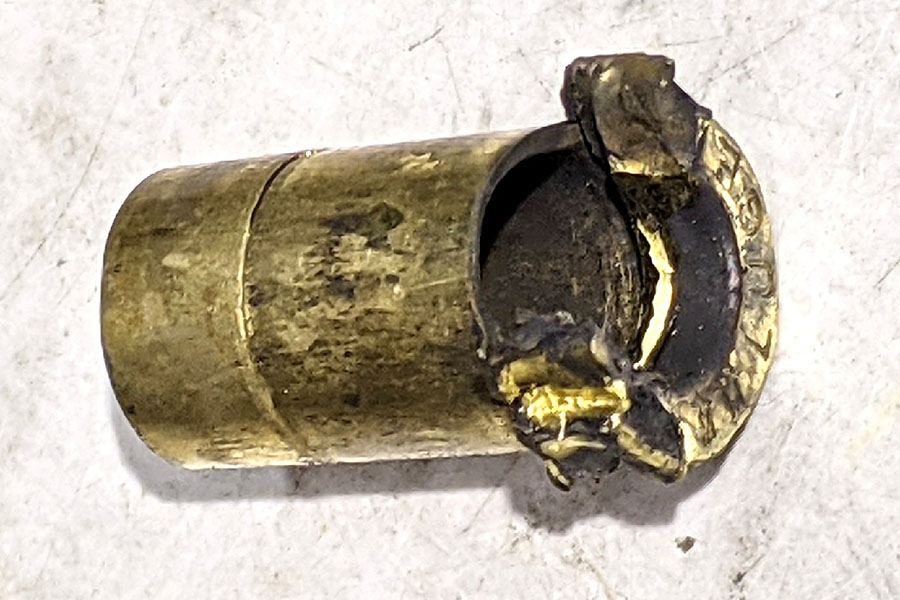
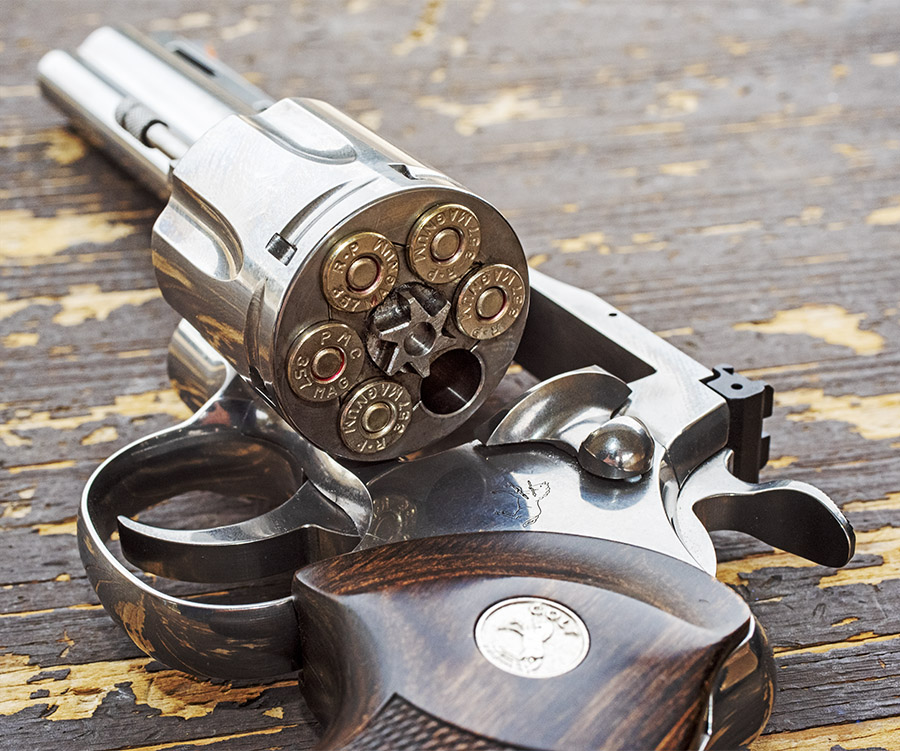
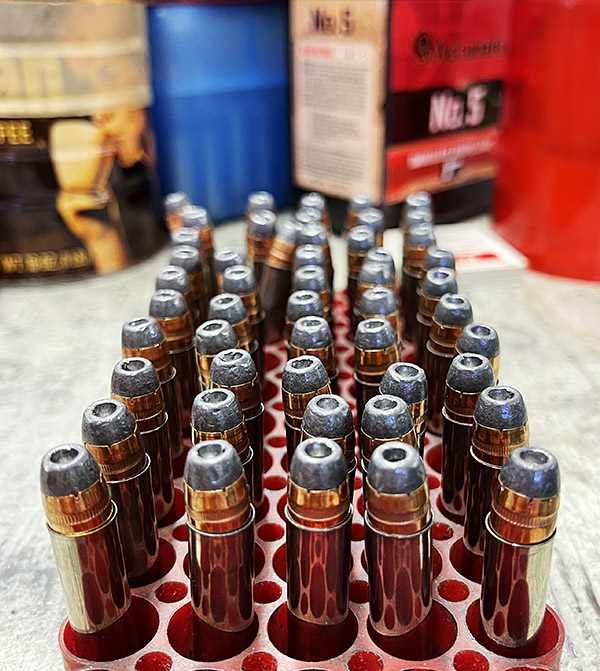

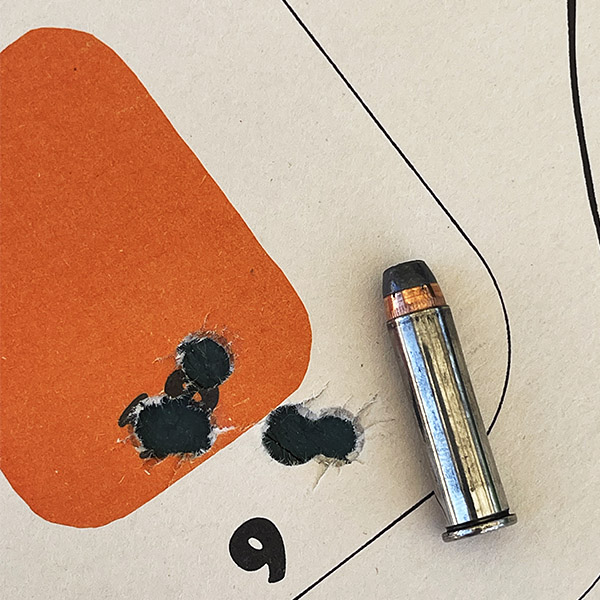

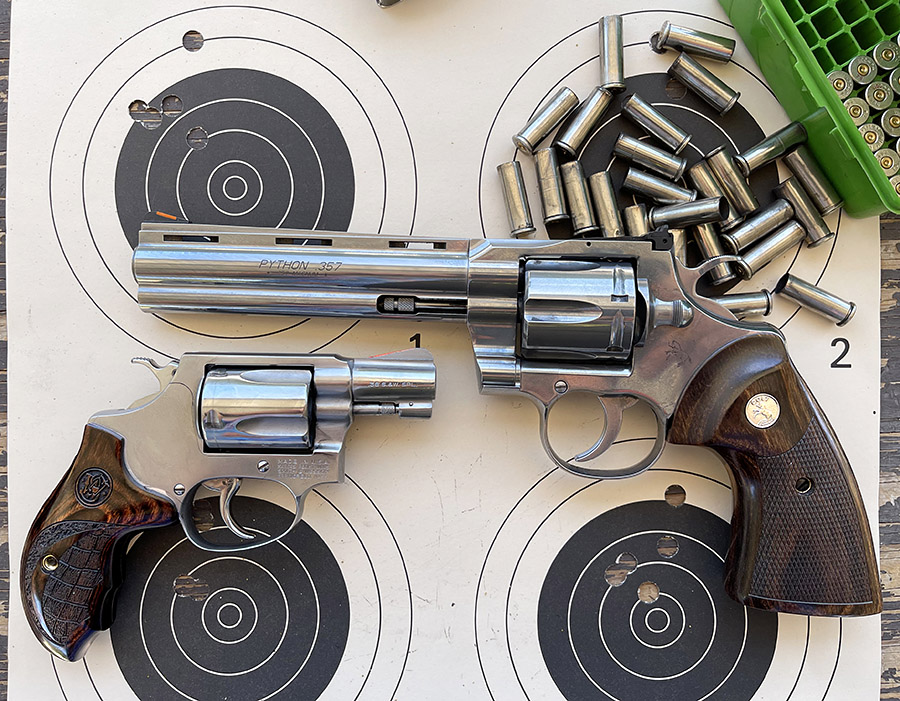
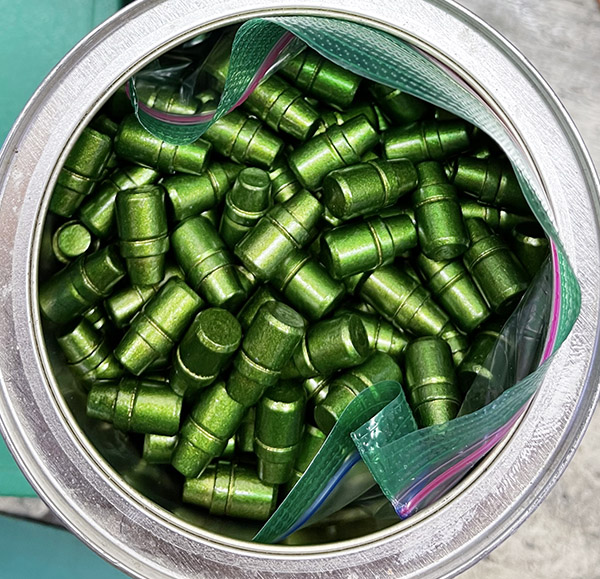


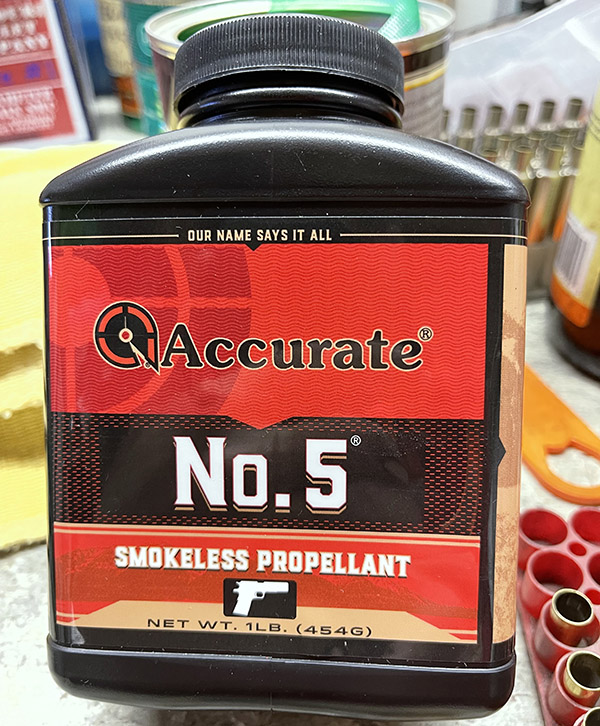




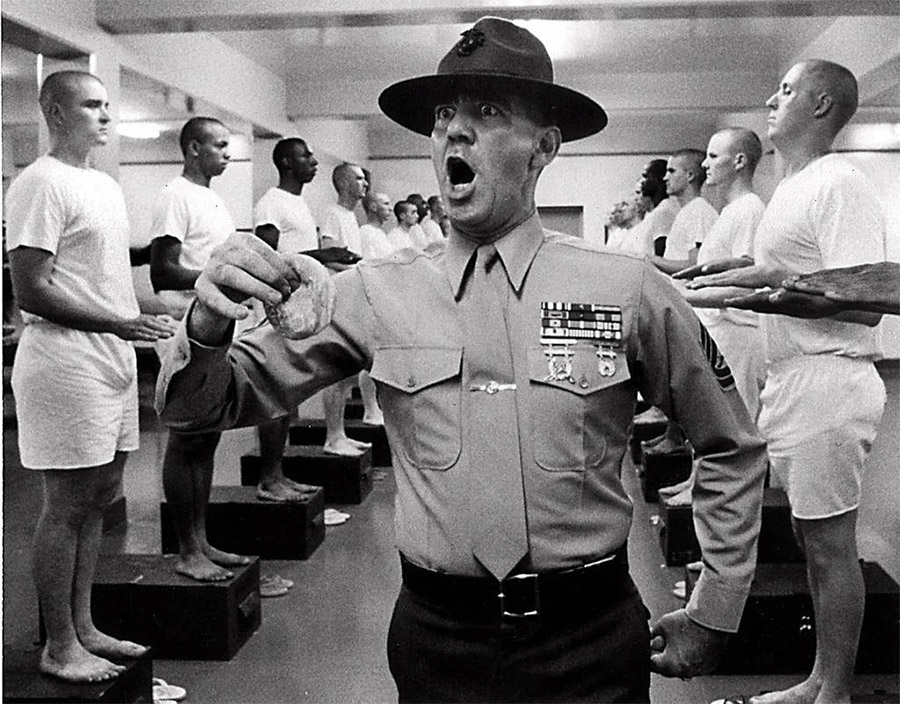



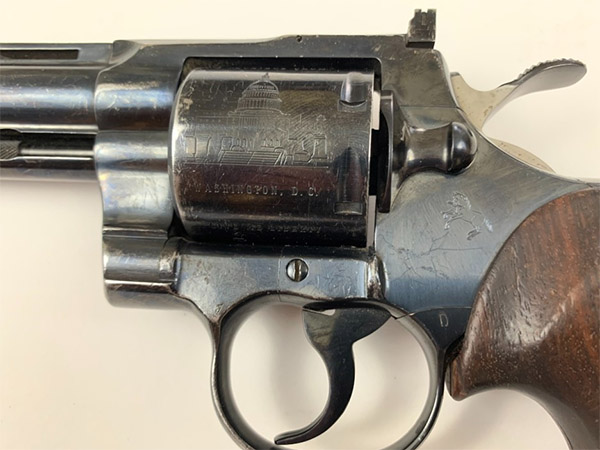


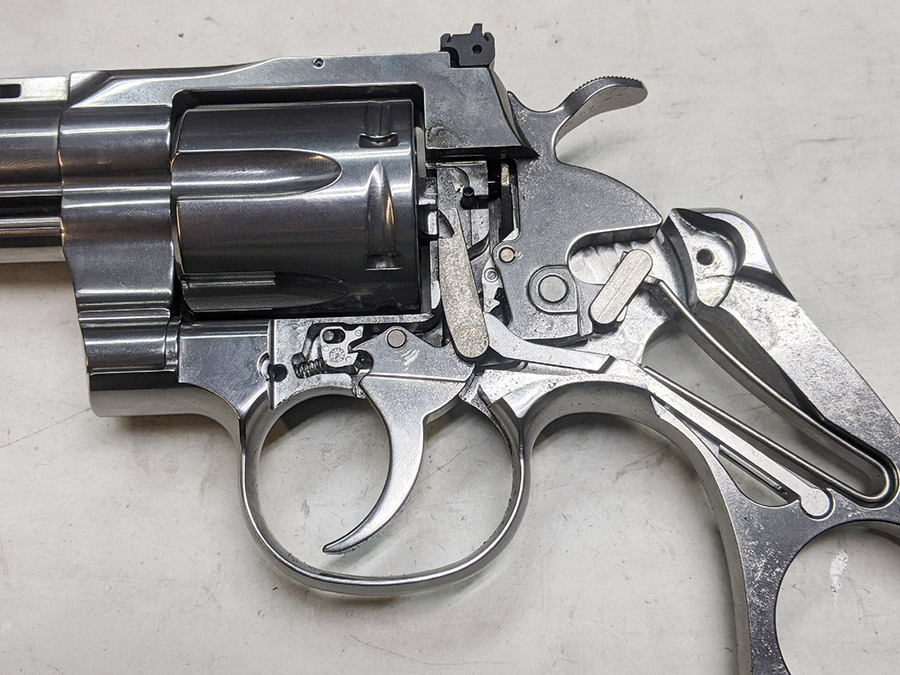
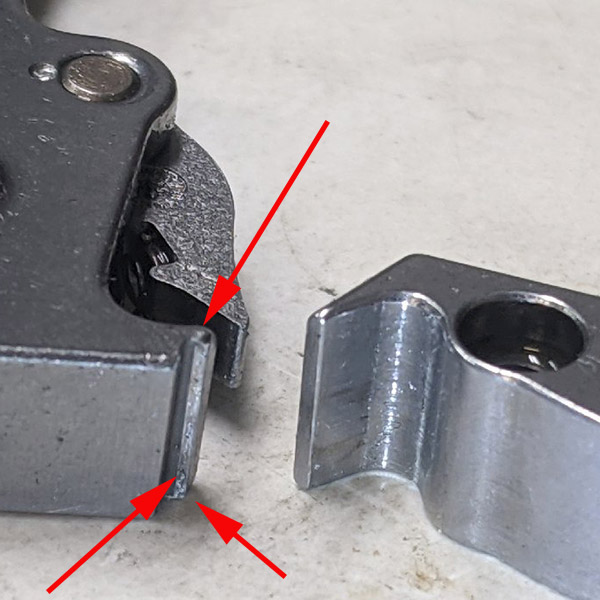
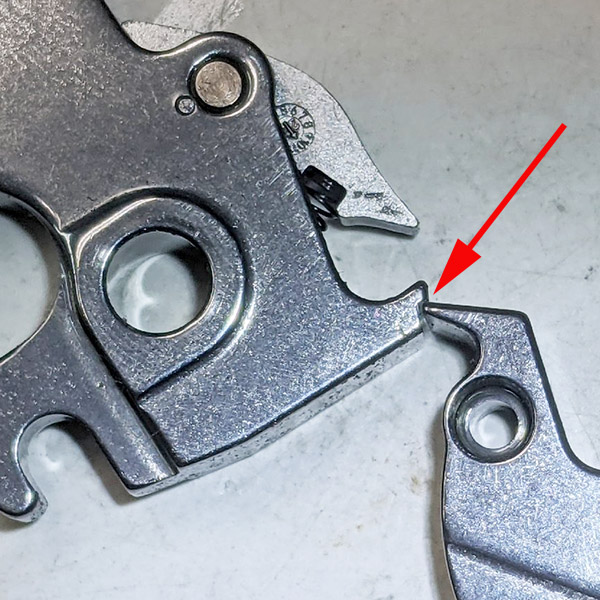
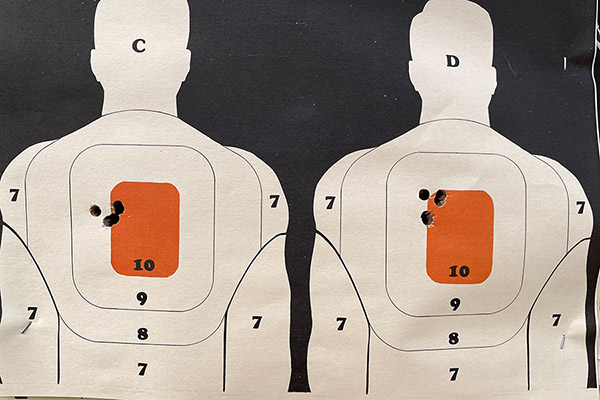

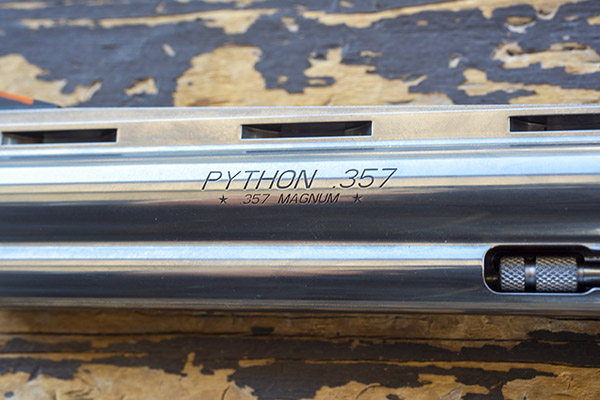
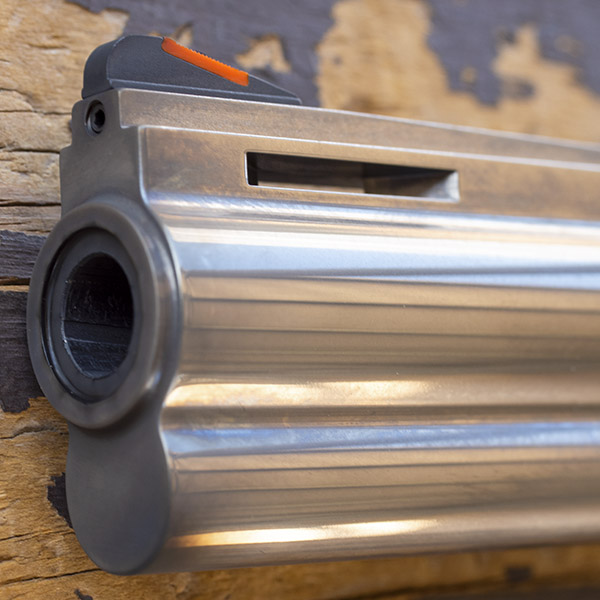
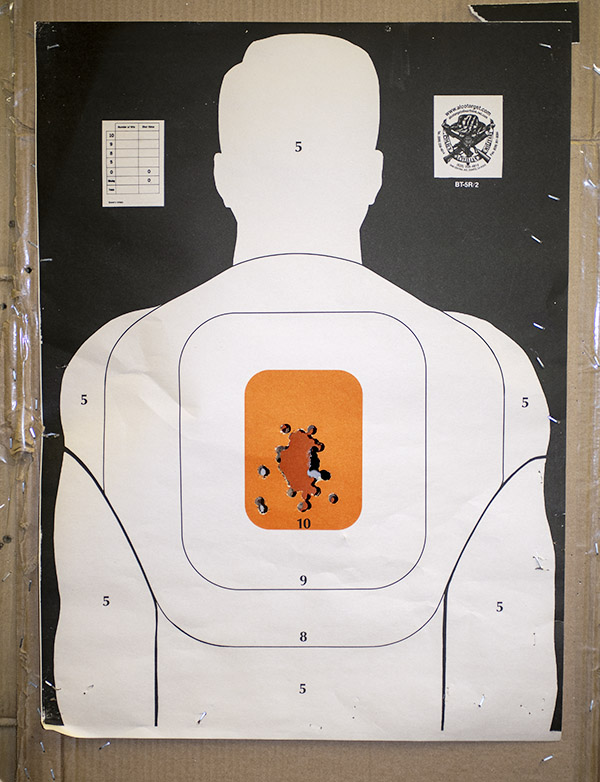
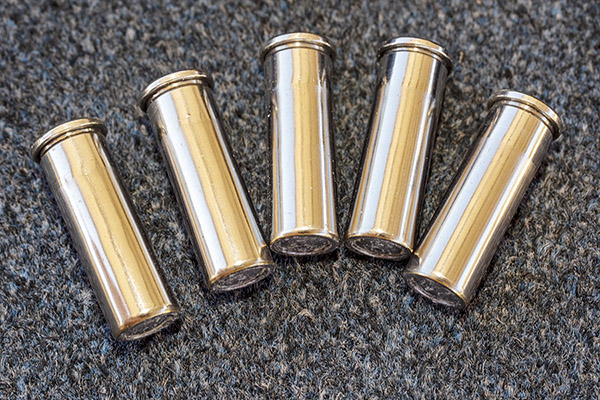
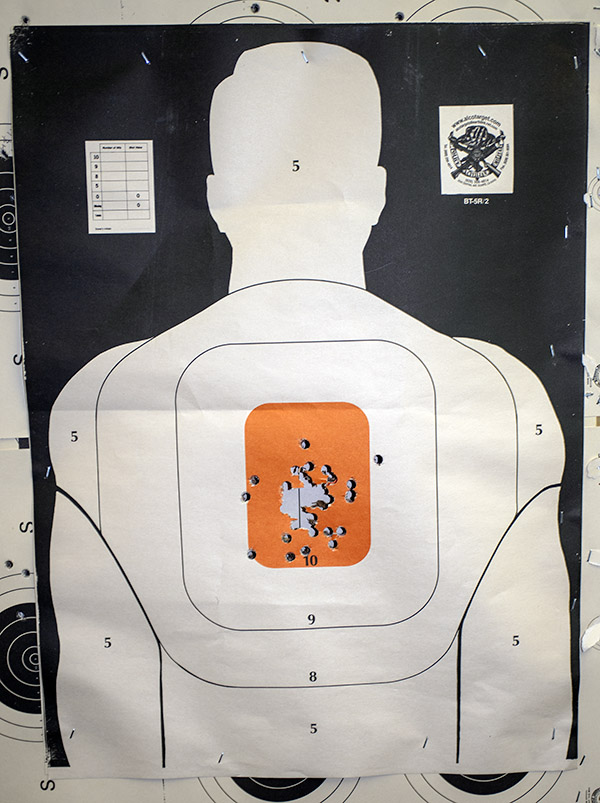

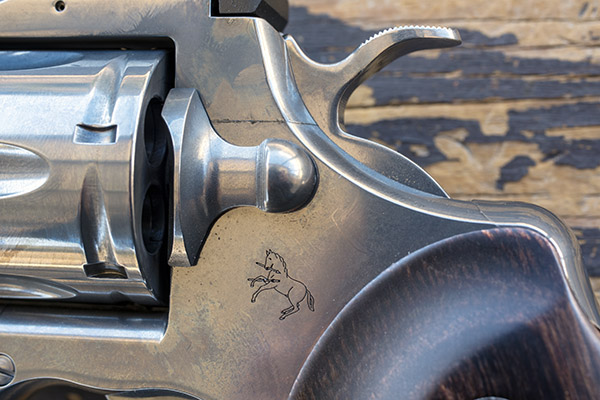

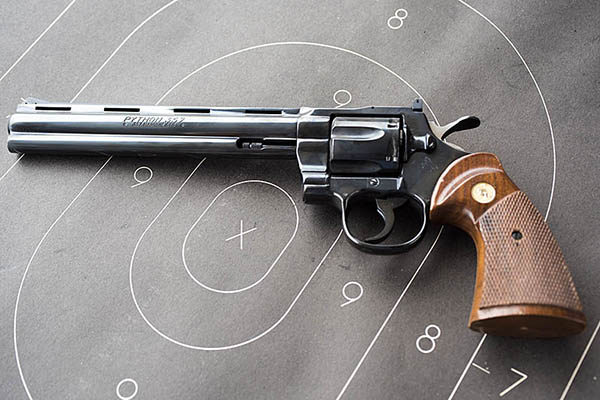
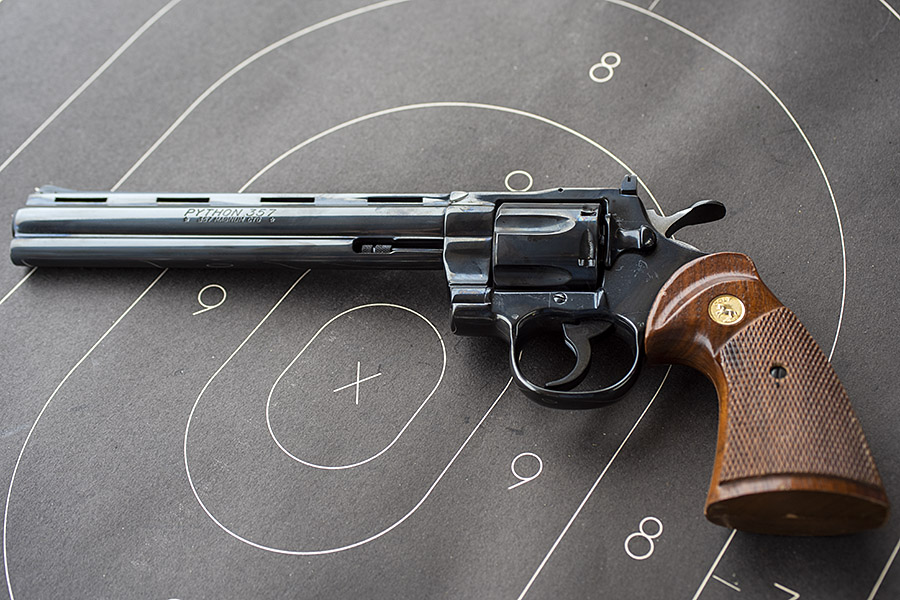
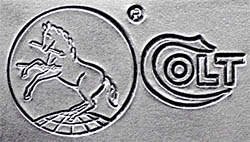 Good buddy Python Pete and I went to the range a few days ago to let loose with a pair of prancing ponies (that is to say, Colts), in both revolver and automatic flavors. The auto was my tried-and-true bright stainless Colt Government Model 1911; the wheelgun was Pete’s stunning 8-inch Colt Python. Both are stunningly beautiful and both are good shooting guns.
Good buddy Python Pete and I went to the range a few days ago to let loose with a pair of prancing ponies (that is to say, Colts), in both revolver and automatic flavors. The auto was my tried-and-true bright stainless Colt Government Model 1911; the wheelgun was Pete’s stunning 8-inch Colt Python. Both are stunningly beautiful and both are good shooting guns.